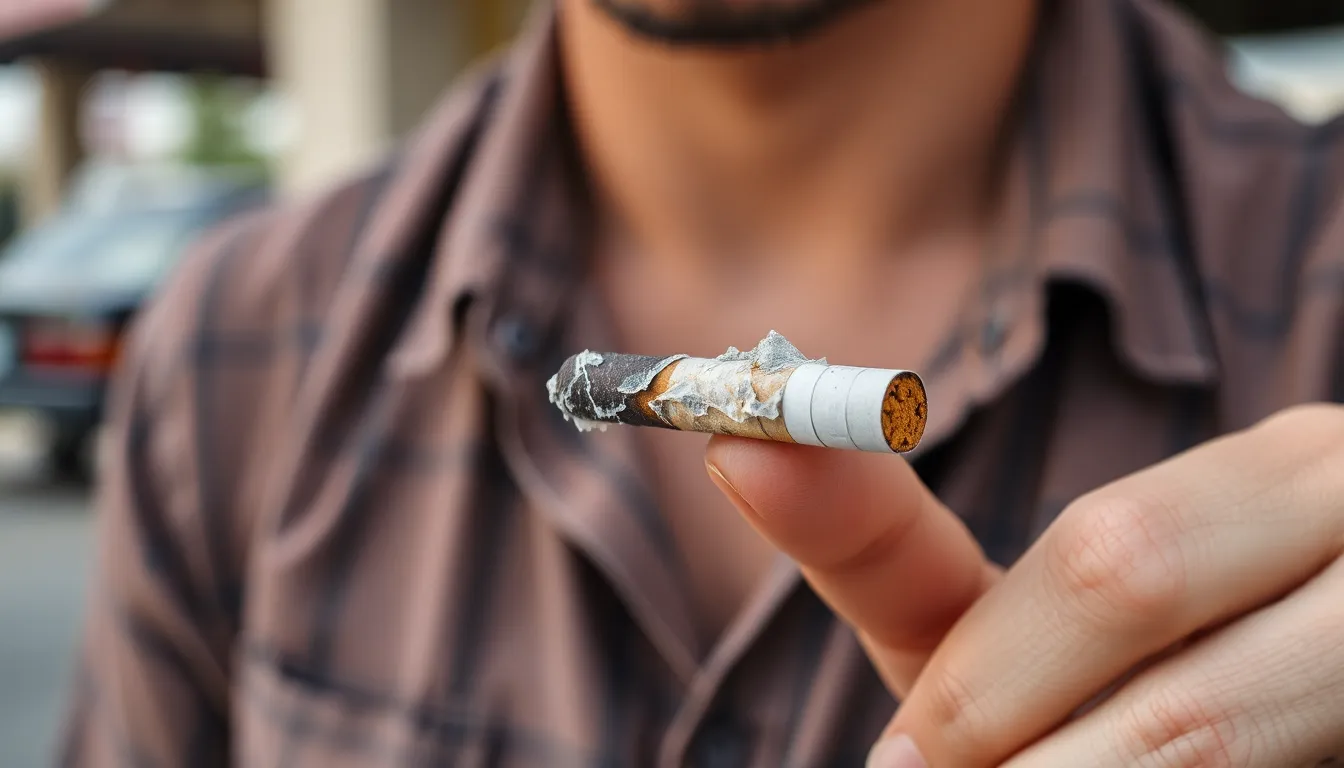Ever wondered how many puffs are packed into that slender stick of tobacco? It’s a question that might sound trivial but reveals a lot about smoking habits and the experience itself. Picture this: you’re at a party, and someone asks, “How many puffs does it take to finish a cigarette?” Suddenly, you’re the life of the party, armed with a quirky fact that could spark a lively debate.
While the answer isn’t as straightforward as counting the number of jellybeans in a jar, it offers a glimpse into the world of smokers and their rituals. From the casual smoker to the seasoned aficionado, knowing the puff count can be surprisingly enlightening. So grab a seat, light up your curiosity, and let’s dive into the fascinating world of cigarette puffs—because who knew smoking could be so… educational?
Table of Contents
ToggleUnderstanding Cigarette Design
Cigarettes consist of several key components that influence the smoking experience and puff count.
Components of a Cigarette
Tobacco serves as the primary ingredient, containing nicotine and various chemicals. Paper encases the tobacco, allowing for controlled burning and regulating airflow. Filters are typically located at the end, designed to reduce inhalation of tar and other harmful substances. Adhesives bond these components together without altering the flavor. Some cigarettes also contain flavoring agents, adding unique tastes that attract different smokers.
Factors Affecting Puff Count
Smoking style significantly impacts puff count, with deep inhalation resulting in fewer puffs overall. Cigarette length affects the total number of puffs, as longer cigarettes provide more tobacco volume to consume. Filters may also influence puff count; those with higher resistance lead to more forceful puffs, potentially reducing the total number taken. Environmental conditions, including wind and humidity, alter burn rates and may change handling speed, which again affects how many puffs one takes.
Average Puff Count in a Cigarette

Understanding the average puff count in a cigarette helps illuminate smoking habits. Cigarettes typically contain around 10 to 15 puffs per cigarette, depending on various factors.
Research Findings
Studies show puff counts correlate with cigarette design and smoking technique. Research from the National Institute on Drug Abuse indicates smokers usually take approximately 10 to 12 puffs. Factors such as puff duration and intensity influence this range, resulting in variations among individuals. Observational studies reveal that the medicinal method of inhalation directly affects how many puffs are taken. Data from smoking behavior surveys highlight that casual smokers often have a lower puff count compared to regular smokers, who smoke more consistently and vigorously.
Variability Among Brands
Cigarette brands exhibit significant variability in puff counts, primarily due to differences in composition and design. Brands like Marlboro may offer a higher puff count—around 15 puffs—while others like American Spirit can yield fewer puffs, approximately 10. Filter types, tobacco blends, and paper thickness contribute to this inconsistency. Seasonal conditions such as humidity and altitude can also affect how each brand burns, leading to further variations in puff counts. External factors, like smoking pace and habits, influence the total number of puffs as well.
Health Implications of Smoking
Smoking poses significant health risks, largely influenced by puff count. Higher puff counts typically correlate with increased exposure to harmful substances. Research shows that each puff delivers a mix of toxic chemicals, including tar and carbon monoxide. Chronic exposure elevates the risk of respiratory diseases and cardiovascular conditions. Regular smokers who take 10 to 12 puffs per cigarette significantly increase their odds of developing serious health issues. Thus, understanding puff count can provide insight into individual health risks.
Effects of Puff Count on Health
Puff count directly affects nicotine intake and overall health outcomes. Smokers often inhale more deeply and frequently, increasing the likelihood of addiction and dependence. High puff counts can lead to more extensive lung damage and exacerbate existing conditions like asthma. Each puff introduces harmful agents that accumulate over time, leading to long-term health consequences. Casual smokers, with 5 to 8 puffs on average, might face lower risks than habitual smokers, but even limited exposure carries dangers.
Comparisons with Other Tobacco Products
Comparing cigarettes to other tobacco products reveals important health distinctions. Cigars and pipes can expose users to higher concentrations of toxins per puff, despite typically having fewer total puffs. Chewing tobacco presents different health dangers with direct exposure to the gums and saliva. Nicotine delivery varies across products, often with cigarettes providing more rapid absorption. Ultimately, understanding puff count in relation to other forms of tobacco helps clarify each product’s health implications.
Alternative Smoking Methods
Exploring alternative smoking methods reveals popular options like vaporizers and e-cigarettes. These devices significantly differ from traditional cigarettes, often delivering a different inhalation experience.
Vaporizers and E-Cigarettes
Vaporizers heat substances without combustion, producing vapor. This process tends to create fewer harmful chemicals compared to cigarette smoke. E-cigarettes work similarly, converting a liquid solution into vapor that users inhale. Research shows that e-cigarettes typically contain less nicotine by volume than conventional cigarettes, influencing puff count. Casual users might take around 5 to 10 puffs with vaporizers, while frequent users may exceed 15 in a single session. These variations can depend on personal preferences, device settings, or e-liquid formulations.
Puff Count in Other Methods
Other smoking methods also exhibit unique puff counts, notably cigars and pipes. Smokers of cigars usually take fewer puffs per session, averaging about 3 to 15 depending on size and smoking style. Similarly, pipe smoking may involve 4 to 20 puffs, influenced by the blend and moisture content of tobacco. Each method presents distinct health risks; cigars contain high concentrations of nicotine and tar, impacting health outcomes. Understanding puff counts and inhalation techniques across these varied approaches aids in comprehending the broader spectrum of tobacco consumption.
Understanding the number of puffs in a cigarette reveals more than just a simple statistic. It opens the door to discussions about smoking behaviors and health risks associated with tobacco use.
With an average of 10 to 15 puffs per cigarette influenced by various factors, smokers can gain insight into their habits and the potential health implications.
As smoking styles and external conditions play significant roles in this experience, recognizing these nuances can empower individuals to make informed choices about their smoking practices.
Ultimately, exploring puff counts not only enriches conversations but also highlights the importance of awareness regarding the health risks tied to smoking.





